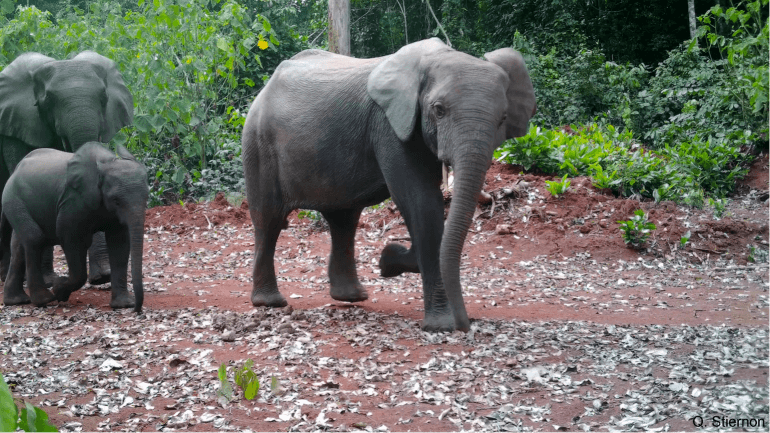Link(s) :


02.06.2023
Published in ScienceDirect as part of Gembloux Agro-Bio Tech PhD student Morgane Scalbert's thesis, the article looks at the use of logging roads and tracks by large mammals in forest concessions in Cameroon.

In the literature, roads are often considered to be barriers for large vertebrates. In central Africa, the creation of roads and skid trails by logging operations leads to changes in the structure of forest landscapes that could influence wildlife movements.
To assess the use of logging roads by six emblematic species of the central African forests, we conducted a camera trap (CT) survey on three types of tracks (secondary roads, skid trails, and elephant paths as control) in a logging concession of south-eastern Cameroon. The relative abundance indices (RAI) of each species derived from the CT data were used in a mixed linear model to test the effects of four factors (type of track; time: day vs. night; gregariousness: alone vs. group; and time after logging: less than one year vs. between one and two years).
The results showed no preference for any type of track for gorillas (Gorilla gorilla) and chimpanzees (Pan troglodytes). In contrast, significantly higher RAI on secondary roads were observed for buffalos (Syncerus caffer), forest elephants (Loxodonta cyclotis), and bongos (Tragelaphus eurycerus). For the last two, the difference was only significant if they were detected in the most recently logged areas, at night (for elephants), or alone (for bongos). We could not test for leopard (Panthera pardus) as we captured only two events.
Although none of the species appear to avoid roads and skid trails, nor do they perceive them as a barrier, further studies should be conducted to increase sampling efforts over time and space to consider seasonality, vegetation growth after logging, geographical variability, and other anthropogenic influence. However, these first results reveal the importance of closing roads after logging to limit encounters between wildlife and humans and highlight the relevance of characterizing roads (type of road, width, surfacing, and canopy structure over the road) when studying their impact on wildlife.
Link(s) :